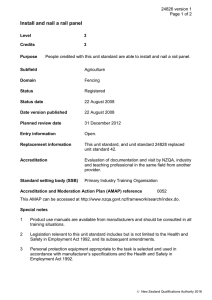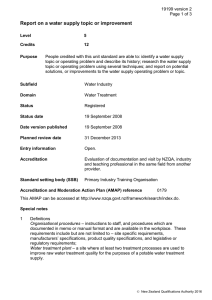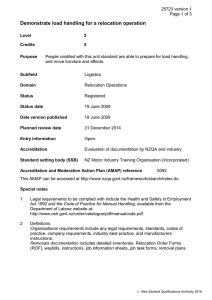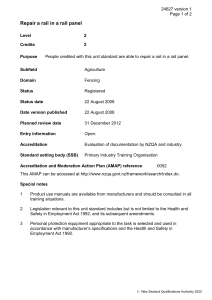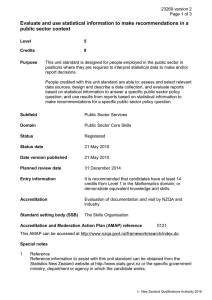Call railway signals
advertisement
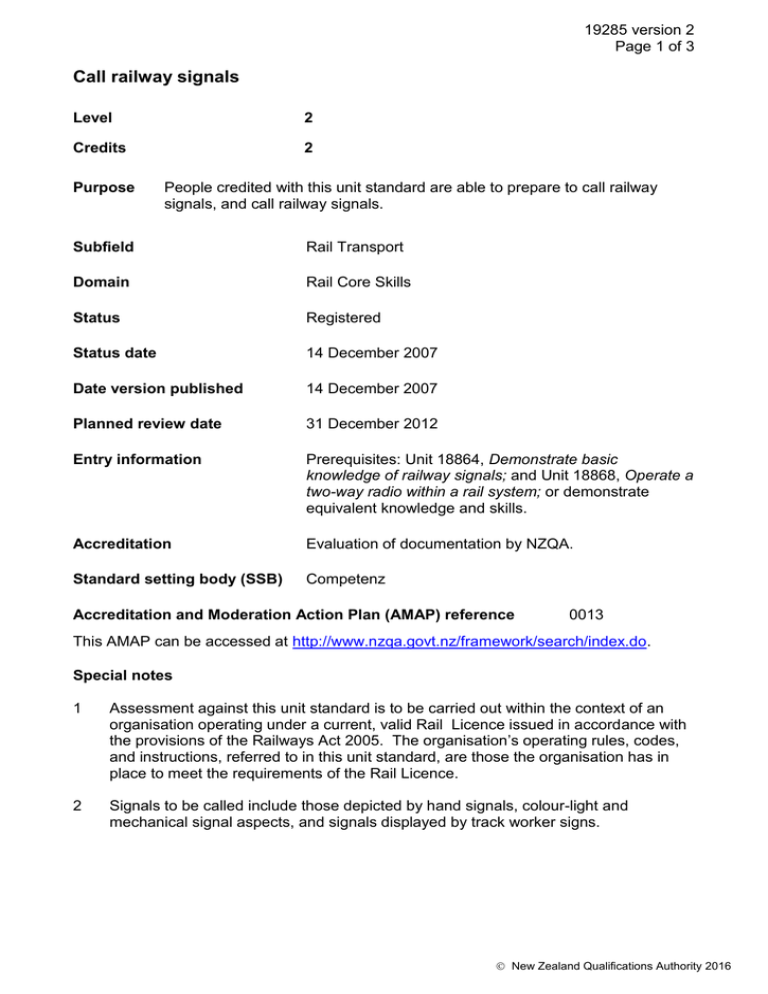
19285 version 2 Page 1 of 3 Call railway signals Level 2 Credits 2 Purpose People credited with this unit standard are able to prepare to call railway signals, and call railway signals. Subfield Rail Transport Domain Rail Core Skills Status Registered Status date 14 December 2007 Date version published 14 December 2007 Planned review date 31 December 2012 Entry information Prerequisites: Unit 18864, Demonstrate basic knowledge of railway signals; and Unit 18868, Operate a two-way radio within a rail system; or demonstrate equivalent knowledge and skills. Accreditation Evaluation of documentation by NZQA. Standard setting body (SSB) Competenz Accreditation and Moderation Action Plan (AMAP) reference 0013 This AMAP can be accessed at http://www.nzqa.govt.nz/framework/search/index.do. Special notes 1 Assessment against this unit standard is to be carried out within the context of an organisation operating under a current, valid Rail Licence issued in accordance with the provisions of the Railways Act 2005. The organisation’s operating rules, codes, and instructions, referred to in this unit standard, are those the organisation has in place to meet the requirements of the Rail Licence. 2 Signals to be called include those depicted by hand signals, colour-light and mechanical signal aspects, and signals displayed by track worker signs. New Zealand Qualifications Authority 2016 19285 version 2 Page 2 of 3 3 For the purposes of this unit standard, calling of railway signals occurs in the following situations: cross-cab communications between second person and locomotive driver in relation to two-person trains; when setting back rail vehicles via a radio link. 4 Definitions: Organisational procedures refer to documents that include: worksite rules, codes, and practices; equipment operating instructions; documented quality management systems; and health and safety requirements. Rail vehicle refers to any flanged wheeled vehicle which uses the railway line. Setting back refers to a movement where a locomotive pushes rail vehicles along a main line or loop, as opposed to hauling rail vehicles. Elements and performance criteria Element 1 Prepare to call railway signals. Performance criteria 1.1 Personal safety equipment is used in accordance with organisational procedures. Range may include but is not limited to - footwear, high visibility clothing, hearing protection, hardhat. 1.2 Visibility of railway signals is established, and vigilance is maintained at all times. 1.3 Communication link is established when setting back operations are commenced. Range may include but is not limited to - two-way radio, intercom. Element 2 Call railway signals. Performance criteria 2.1 Signal aspects called are consistent with the signal displayed. Range may include but is not limited to - hand signals, colour-light signals, mechanical signals. 2.2 Aspects terminology and calling sequence is in accordance with organisational procedures. 2.3 Description of track worker signs is consistent with organisational procedures. New Zealand Qualifications Authority 2016 19285 version 2 Page 3 of 3 2.4 Signals are called in a clear and concise manner. 2.5 Cross-cab signal is repeated by caller until receiver acknowledges and repeats the signal called. 2.6 Amendments to already called signals are made promptly to allow the locomotive driver to act. 2.7 Hand signals are used in addition to called signals in the event of an emergency stop. Please note Providers must be accredited by NZQA, or an inter-institutional body with delegated authority for quality assurance, before they can report credits from assessment against unit standards or deliver courses of study leading to that assessment. Industry Training Organisations must be accredited by NZQA before they can register credits from assessment against unit standards. Accredited providers and Industry Training Organisations assessing against unit standards must engage with the moderation system that applies to those standards. Accreditation requirements and an outline of the moderation system that applies to this standard are outlined in the Accreditation and Moderation Action Plan (AMAP). The AMAP also includes useful information about special requirements for organisations wishing to develop education and training programmes, such as minimum qualifications for tutors and assessors, and special resource requirements. Comments on this unit standard Please contact Competenz qualifications@competenz.org.nz if you wish to suggest changes to the content of this unit standard. New Zealand Qualifications Authority 2016

